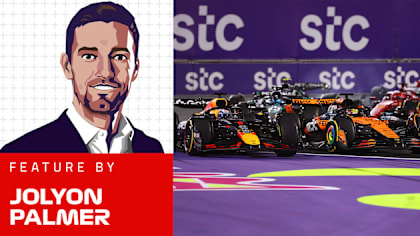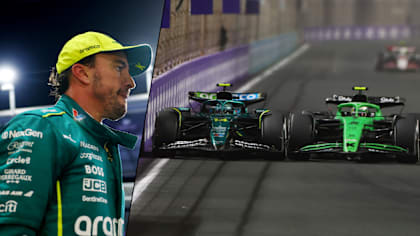Anti-establishment. Unconventional. Independent. Partial to champagne-fuelled shenanigans. Hesketh Racing - and their maverick driver James Hunt - were all of these things and more. But on an incredible day at Zandvoort in 1975 they also became Grand Prix winners. 40 years on, we remember one of F1 racing’s greatest underdog victories…
A team like no other

Zandvoort, Holland. 20-22 June 1975. James Hunt (Hesketh Ford) with Lord Alexander Hesketh, Anthony (Bubbles) Horsley and Harvey Postlethwaite. Ref: 75HOL29. World Copyright - LAT Photographic
Bankrolled by larger-than-life British peer Lord Alexander Hesketh (far left) and managed by his friend, ex-used car dealer Anthony ‘Bubbles’ Horsley (second from right), the self-styled ‘biggest little racing team in the world’ had entered 20 world championship races by the time of 1975 Dutch Grand Prix. But despite moderate success (including six podium finishes) they - and their fast but frequently wild driver James Hunt (second left) - were still far better known for their antics off the track than for their results on it. Worse still, this lack of significant success had resulted in the underdog squad becoming increasingly impoverished. If Hunt - affectionately known as ‘Superstar’ by Lord Hesketh - couldn’t start bringing in some big results there was a real danger of the money running dry. With this in mind the fun-loving privateers and their driver decided to adopt a more focused approach. In the Cosworth-powered 308B, designer Harvey Postlethwaite (far right) had a produced a competitive car, but did they really have a package good enough to defeat the might of Maranello?
Best of the rest
)
Zandvoort, Holland. 20-22 June 1975. James Hunt (Hesketh 308 Ford) 1st position. This was his and the team's maiden Grand Prix win. It was also Hesketh's only Grand Prix victory. Ref: 75 HOL 36. World Copyright: LAT Photographic
Few arrived in Zandvoort expecting to see anything other than a Ferrari walkover, especially with star driver Niki Lauda rounding into imperious form. The rapid Austrian, who’d won at the seaside venue a year earlier, entered the race on the back of three successive victories, and true to form it was he who dominated practice. But taking third on the grid, just 0.41s back from Lauda and team mate Clay Regazzoni, was Hunt (pictured) in his striking, sponsor-free machine. It was a terrific effort from the frequently-sideways Englishman, though not even the man himself thought he stood much chance of challenging the powerful Prancing Horses for victory in the race.
Making the right call

Pole sitter and second place finisher Niki Lauda (AUT) Ferrari 312T leads the field in the wet into the first corner Tarzan. Dutch Grand Prix, Zandvoort, 22 June 1975. BEST IMAGE
Heavy rain drenched the dune-encircled circuit ahead of the race, prompting a delay to the start to allow the drivers to sample the slick conditions. During this period many chose to tweak their cars for the wet surface, but after spotting clearer skies on the horizon Hunt and Horsley boldly decided to stick with a dry weather set-up. It would prove to be an extremely canny decision. Though conditions - and visibility - were still extremely poor when Lauda (red car, centre of picture) shot into the lead at the start, the clouds soon disappeared and by lap 7 a dry line began to emerge. Quick as a flash Hunt - running fourth - broke from the pack and darted into the pits to take on dry tyres…
Climbing the order

James Hunt (GBR) Hesketh 308B took his first GP victory and the first (and only) for Hesketh. Dutch Grand Prix, Zandvoort, 22 June 1975. BEST IMAGE
After a carefully conducted pit stop Hunt (pictured) re-joined the race all the way down in 19th. However, the Hesketh man wouldn’t be mired in the lower order for long as one by one those ahead of him pealed into the pits to take on slick rubber. Somewhat surprisingly it would be another seven laps before race leader Lauda made his stop, by which time his once solid advantage had been completely overhauled by Hunt, who shot gratefully into the lead. Lauda emerged from the pits in second, but as he struggled to get heat into his tyres Jean-Pierre Jarier raced past in his Shadow and demoted the pre-race favourite to third
Defending a fragile lead

Second place finisher Niki Lauda (AUT) Ferrari 312T overtakes Jean-Pierre Jarier (FRA) Shadow DN5 , who was running second when his tyre blew on lap 45, spinning him out of the race. Dutch Grand Prix, Zandvoort, 22 June 1975. BEST IMAGE
When the pit stops had shaken out Hunt was left in a decent lead, but despite pressing about as hard as he could, Jarier (black car, slightly obscured) and Lauda (red car) began to whittle away at his advantage. After 30 of the 75 laps there was just eight seconds separating the white Hesketh from its pursuers - a gap that shrank even further when after several failed passing attempts Lauda was finally able to jink his way past Jarier on Lap 43…
Keeping Lauda at bay

James Hunt (GBR) Hesketh 308B, who took his and HeskethÃÆââ¬Â¢s first GP victory, leads Niki Lauda (AUT) Ferrari 312T, who finished second. Dutch Grand Prix, Zandvoort, 22 June 1975. BEST IMAGE
Having dispatched the dogged Jarier (who would exit the race with a spectacular rear tyre explosion barely a lap later), Lauda stepped up his pursuit of the unfancied race leader. With such a long way still to go, it seemed unthinkable that Hunt could keep the Austrian at bay, especially when the Ferrari eased intimidatingly onto the Hesketh’s gearbox. But if anything, having Lauda breathing menacingly down his neck only served to strengthen Hunt’s resolve. Lap after the lap the Englishman kept the Ferrari driver at arm’s length, cleverly timing his moves on backmarkers to put Lauda off his stroke. On several occasions the Austrian got so close to the Hesketh that a change of lead seemed inevitable, but again and again Hunt hung on, and by now the chequered flag was almost in sight…
Digging deep for victory

James Hunt (GBR) Hesketh 308B, who took his first GP victory and the first (and only) for Hesketh returns to the pits at the end of the race. Dutch Grand Prix, Rd 8, Zandvoort, Holland, 22 June 1975.
As the leading duo began the 75th and final lap, Hunt clung to his improbable lead - but Lauda’s 312T still loomed large in his mirrors, if not quite as close as it had previously. For the Austrian it was a case of now or never, but try as he might he couldn’t get close enough to the inch-perfect Englishman to attempt a passing move. Eventually, after 1h 46m of flat-out racing, Hunt crossed the line 1.06s ahead of his highly-fancied rival to secure his maiden F1 triumph. Against the odds, Hesketh Racing - a team formed for the sole purpose of having fun and who had arrived at the highest echelon of racing almost by chance - were Grand Prix winners. Cue scenes of unbridled celebration in the pit lane, not least from the squad’s charismatic benefactor…
A moment to savour

The podium (L to R): Niki Lauda (AUT) Ferrari, second; James Hunt (GBR) Hesketh, winner for the first time; Clay Regazzoni (SUI) Ferrari, third. Dutch Grand Prix, Zandvoort, 22 June 1975. BEST IMAGE
“On top of every (sand) dune were just waves, waves and waves of Union Jacks,” recalled Lord Hesketh of Hunt’s lap of honour in Gerald Donaldson’s renowned Hunt biography. “It was a wonderful feeling to know that those people, who had travelled with us all the way around Europe and had seen frustration after frustration, finally saw the result they wanted.” Hunt, flanked by Lauda (left) and third-place finisher Regazzoni (right) in this picture, had become England’s first Grand Prix victor since 1971. But more significantly Hunt felt that he’d now completed his education as a driver. “I could not have had greater pressure than I did in that race,” he’d explain later. “I lacked experience leading races, which is why I cocked up a couple of times earlier than year. But for once I didn’t make any mistakes, and after that it became easier.” Little wonder then that Hunt - world champion the following year - referred to the '75 Dutch Grand Prix as the most important race of his career.
Main image: © LAT Photographic
All other images: © LAT Photographic & © Sutton Motorsport Images




